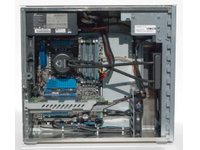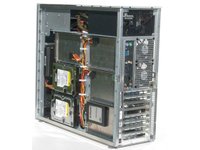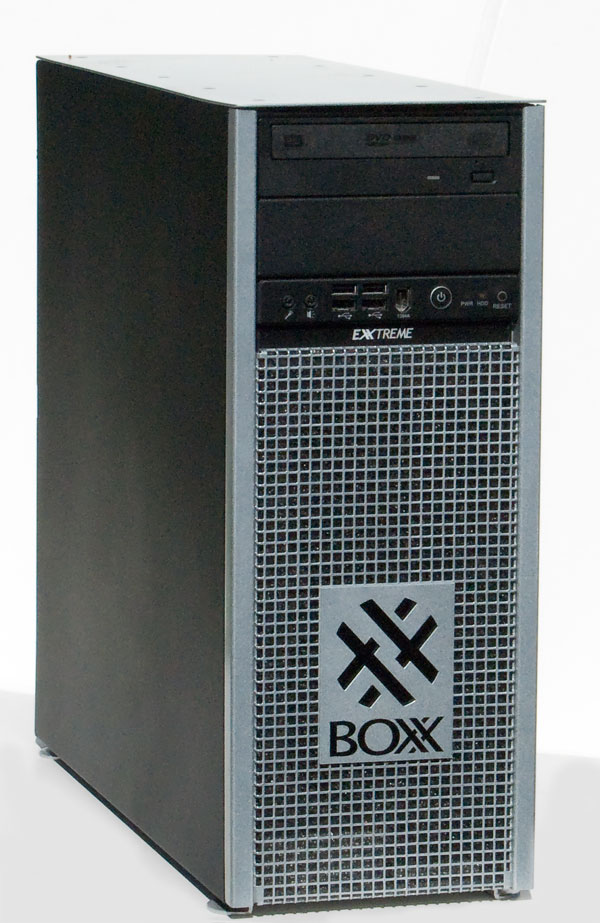Boxx Technologies 3DBOXX 4860 Workstation
Introduction: Overclocking A Workstation?
In our most recent workstation review, we confidently claimed that professional-class workstations are not overclocked. Business users generally don't care about an extra five or 10% performance that could compromise the stability of their machines or result in an error impacting the viability of an important design.
It seems we weren't entirely accurate with that statement, though.
Boxx Technologies is a system builder that specializes in designing and integrating workstations and rendering systems for the visual effects, digital content creation, and advanced visualization markets. It was founded in 1996 and is based in Austin, Texas. The company says its business model involves the innovative integration of best-in-class components in order to create solutions that enable market segment users to get their work done as fast as is possible. Boxx doesn't build consumer-level systems for gaming and productivity applications. Its focus is on the workstation market.
Some notable Boxx clients include: CafeFX, Technicolor, Disney, Boeing, Lockheed-Martin, URS, BMW Designworks, the Federal Aviation Administration, and the U.S. Air Force. It has partnerships with most developers in the DCC and CAD industries.
The 3DBOXX 4860 Xtreme-Series Workstation
Boxx premiered its new Xtreme workstation family just before SIGGRAPH 2010, and the systems were used extensively in demonstration booths at SIGGRAPH. For instance, the Nvidia demo displays at the show were running on Boxx workstations. The 4860 is a single-socket Intel Core i7-based workstation available in various configurations, up to and including the overclocked setup we are testing here.
The company also sells its 3DBOXX 7600-series workstations based on AMD Opteron CPUs and 8500-series systems that employ dual-socket-capable Xeon 5600-series processors. The AMD-based machine can't be purchased overclocked, but the 8500-series configurations can be purchased at up to 4.2 GHz. While the 4860 employs an X58-based motherboard and LGA 1366-based Core i7 processor, the 8500-series relies on an Intel 5520 chipset-based platform and Xeon processors, which are needed to run in a 2P arrangement.
Get Tom's Hardware's best news and in-depth reviews, straight to your inbox.
The 4860 can take two dual-slot GPUs, while the slightly higher-end 4880 can take four dual-slot or seven single-slot GPUs. The 8550 can do the same four/seven configuration. It should be noted that these slots would not be merely used just for graphics cards, as Tesla GPU Computing boards require 16-lane PCIe slots as well.


Boxx designs its own chassis, which it has manufactured locally. Installed drives, as you can see in the images above, are mounted vertically behind the motherboard, which certainly increases the available airflow to the board and its components. At the same time, though, it may limit airflow across the hard drives. Though that's probably not an issue with our test setup, we suspect it could be if you were using a large array of 10 000 or 15 000 RPM disks. Fortunately, Boxx says that it tests its systems with a full load of drives, and hasn't seen any troublesome temperatures with its chassis design. Moreover, we didn't encounter any heat-related issues during testing.
Current page: Introduction: Overclocking A Workstation?
Next Page Hardware Setup And Benchmarks-
nebun what a cheap cpu cooler they have....really...for 8k they could have installed a better cooling systemReply -
utengineer mayankleoboy1though if i were to take each component separately and build our own system, it would be cheaper.You forget, the cost of a commercial PC includes service, support, and licensed certifications.Reply
-
nforce4max I wouldn't purchase this workstation. First you can build a better base machine for the fraction of the cost. Second you can purchase on your own the software you require or pirate. Third there is a flaw, yes there is always the temptation of mounting the hard drives in that manor but isn't recommended due to the uneven wear on the spindle that can lead to early failure.Reply -
For this price, I'd go with a workstation from a major player (ex. HP or similar). You could easily build a dual socket workstation with similar (or better) overall performance; remember that many apps that require this level of hardware are optimized for Xeon instruction sets and 8+ threads. Additionally, you're software vendors would actually support their products on a system running within spec. Simply put, this is a toy not an enterprise class productReply
-
wiyosaya utengineerYou forget, the cost of a commercial PC includes service, support, and licensed certifications.Licensed certifications may be confidence inspiring to some, however, I think they are a waste of money. It is just a different form of branding that can be marketed at what is usually an expensive premium. Think THX certification. It was expensive in consumer audio and video, however, in my opinion, it has had it's 15-minutes of fame.Reply
